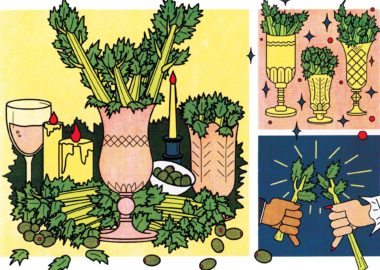It goes by many names: transmedia storytelling, transmedia narrative, cross-media seriality, and multiplatform storytelling.
But what exactly is ‘it’? And why does it matter?
At ECHO, we most often use the term multiplatform storytelling to describe the general technique of telling a story using several formats and/or platforms, ideally with some involvement by audience or end users.
When a story first arises in the mind, it often comes with an idea of format. You’ll sense, for example, when a story will best be told aloud, preferably in a group. Or when it needs to be expressed in writing, with attention to nuance. Or perhaps when it needs to be told on a big screen with plenty of explosions.
It’s when you start to imagine other ways to express that story, or to make it even better, that you enter the realm of multiplatform storytelling. It’s when you can envision additional tools and platforms bringing something else out in the story. It’s when you can imagine all of those things contributing to layering the story.
Why Multiplatform Storytelling?
As humans, we tell stories at different times, usually to explain or illustrate something, to persuade someone and/or to amuse or entertain. It’s how we make sense of the world and communicate our understanding to others. Our brains may be able to take in isolated facts and random events, but what we long to do, innately, is to tie things together. To connect the dots. To create cause and effect. To construct plot. We do this with story. Hearing stories and telling them is deeply satisfying, memorable and often moving.
We tell and consume stories across, and using, different platforms because we’re curious little creatures. We wonder: how might that story look from a different perspective? From a different character’s standpoint? What happened to the characters after the ending? How else might the story be told?
Technology affords us so many new options for extending a storyline, for customizing plot and character, for altering or presenting another visual look and feel that for many it can feel, well, disappointing to settle on a single unchanging narrative.
Examples of Multiplatform Storytelling
So where to find multiplatform storytelling? Thanks to social media and mobile technology, nearly everywhere. Below, we’ve highlighted a few places to begin your multiplatform studies.
 The Biggies of Transmedia Entertainment
The Biggies of Transmedia Entertainment
Some would (and do) argue that there are differences between a huge entertainment franchise, and ‘pure’ transmedia storytelling, but few would argue that The Matrix does not fit nicely into both camps. Why?
Scholar and transmedia storytelling guru Henry Jenkins chalks that up to dispersal. More simply, he says a transmedia story is one that tells the full story only as the sum of its parts. In a handout for a Transmedia Storytelling 101 course, Jenkins explains that “transmedia storytelling represents a process where integral elements of a fiction get dispersed systematically across multiple delivery channels for the purpose of creating a unified and coordinated entertainment experience. Ideally, each medium makes it own unique contribution to the unfolding of the story. So, for example, in The Matrix franchise, key bits of information are conveyed through three live action films, a series of animated shorts, two collections of comic book stories, and several video games. There is no one single source or ur-text where one can turn to gain all of the information needed to comprehend The Matrix universe.”
Other transmedia biggies that have done this well include — you guessed it — Star Trek, Star Wars, The Hunger Games, Harry Potter, and the intertextually intertwined Marvel Universe.
Kids Entertainment: PBS Kids
The creators of kids TV have multiplatform storytelling down to an art. They have to: parents don’t want their kids chained to the TV all day, but understand that their kids develop relationships with characters presented through TV series — and can learn from them (we’ll thank Sesame Street for that one).
PBS Kids does educational (and entertaining) multiplatform storytelling for kids particularly well, treating the launch of any new series as an opportunity to reach kids — and more importantly, their concerned parents — in numerous ways, on numerous media. Peg + Cat, as one example, is a math-focused series for the preschool set, launched in 2013 with mobile and integrated online content — multiplatform now being the norm for any series launch. The series offers web-based games, learning tools, parental resources and a mobile app, all available at pbskids.org/peg.

Journalism Schools: J4462, Emerging Technologies at Missouri School of Journalism
As news organizations face the challenge of connecting with people like you and me who consume news very differently than our parents did (or than we ourselves did, five years ago), universities have helped to explore new ways of telling compelling many-platformed stories. This experiment, which explored multiplatform storytelling among six news organizations, was led by the Donald W. Reynolds Journalism Institute at the Missouri School of Journalism, based on this hypothesis:
“Different content optimizes to different platforms at different points in a progressive storytelling process. For instance, slideshows, “Five Things to Know,” and other short, easy-to-consume elements resonate on mobile phones. But because mobile has varying screen sizes and optimization opportunities, video clips and data visualization might resonate better on a tablet.”
 Publishing: WIRED Magazine
Publishing: WIRED Magazine
Every magazine and newspaper editor and publisher on the planet, at one point or another, has likely asked themselves how (and/or whether) to best utilize digital media to better (and more profitably) serve readers and advertisers. In a quest to do, editors and digital media specialists have been gathering for nearly a decade now to plan multimedia content that rivals the effect of the New York Times’ famous Snowfall: The Avalanche at Tunnel Creek, or at least to offer a different, platform-specific presentation of content for their different platforms (a long-form article in the magazine, say, with a photo slideshow online and/or a video or audio interview for the iPad edition).
Even in the early days, Scott Dadich, WIRED’s editor in chief, says he “quickly saw how print and online content can be adapted to take advantage of each platform’s strengths,” and sees a very real possibility for a publishing ecosystem where different platforms support one another effectively. Hear, hear. He spoke recently at The Future of Storytelling conference; this video offers a summary of his vision for powerful multiplatform storytelling for magazine titles and well beyond.
 Intelligent Activism: Bear 71
Intelligent Activism: Bear 71
A wonderful example of multiplatform storytelling intended to educate and inspire action, the National Film Board of Canada’s Bear 71 explores the ways people, nature and technology interact, using an interactive social narrative and a variety of platforms. It was launched at the 2012 Sundance Film Festival New Frontier program, allowing the audience to engage with a female grizzly bear (that was watched throughout her life via trail cameras in Banff National park) through a series of webcams, social media channels, a microsite, augmented reality and more. The result was a piece of environmental reporting that felt very human, and very close.
 Marketing and Advertising Campaigns: Airbnb
Marketing and Advertising Campaigns: Airbnb
Airbnb is a master at content marketing, and at telling stories that get to the heart of why people want to connect. It’s not surprising, then, that the company’s Wall and Chain story was shortlisted for Best Multiplatform Campaign in the 2014 Shorty Awards. The story was targeted at “inspiring belonging and celebrating a united Germany through the magical true story of an Airbnb host and guest on the 25th Anniversary of the fall of the Berlin Wall.”
Airbnb created an animated film to bring the story to life, as well as at the same time conducting an economic impact study on Berlin to showcase thow Airbnb travellers support the local economy and make a difference to the city as a whole — communicating all of this through an immersive digital experience. They supplemented this with long-form written articles, updates via social media channels, behind-the-scenes videos showcasing the real family behind the animated film and hosting a unification event “that paid homage to the roots of Berlin history and culture through the feature of a Berlin Wall build out.” The campaign in total earned more than 8 million views across social and digital with 130 press hits in 15 countries.
What It’s All About
Telling rich, interconnected stories may sound complex, and a little daunting. It doesn’t have to be. It’s still all about communicating, connecting, amusing and hopefully understanding one another — using the tools and means of expression that make the most sense for your purpose.
Do you want to mark your company’s anniversary in a meaningful way? Wondering how to share your organization’s rich heritage in a way that truly resonates with your employees or customers? We can’t wait to hear from you. Drop us a line at hello@echostories.com or call us at 604-261-1858.







